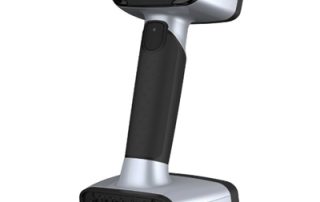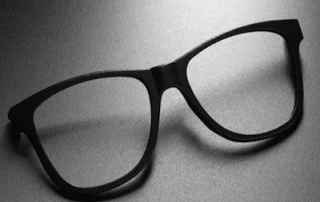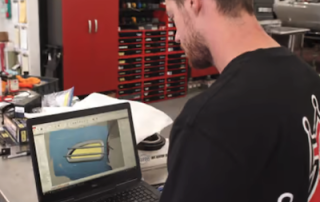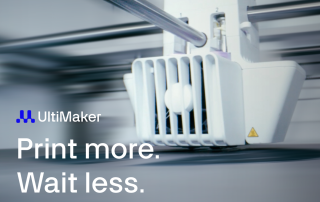Metrology Minute – Pairing Manager in Control X
When objects are scanned for inspection, Control X needs to be able to review the scan and extract analytic features from the scan. For instance, when measuring a radius, the software needs to be able to distinguish where one radius CAD feature ends and a new feature starts in order to perform an accurate measurement. Using the CAD model below as it example, it is comprised of many analytic features, such as cylinders, planes, tori, etc. The scan of the manufactured part to measure looks like the image below. When the scan of a specific feature “overlaps” the edges of the feature, it can sometimes bleed into an adjacent feature and then the software can have difficulties distinguishing where one feature ends and the adjacent feature begins. Let’s consider this machined feature shown below. If we open the Pairing Manager and select that feature from the CAD model, we notice that the edges of the scan somewhat ‘bleed’ into the adjacent fillets all around the feature. The overextended mesh can sometimes cause challenges for the GD&T dimensioning system. We can use the Pairing Manager to shrink the edges of the mesh back, to ensure that there is no ambiguity, and that Control X [...]
An Overview of 3D Scanners
As a good rule of thumb, there are three areas of highest concern when selecting the right 3D scanner for your needs. 3D Scanners should be selected based on their accuracy, their resolution, and in cases of metrology, for their repeatability. Accuracy is perhaps the most intuitive as it is simply the distance that the scan points will be from the surface being captured. Resolution (aka “Point Spacing”) is a scanner’s ability to capture fine detail. It is essentially the density of the point cloud. So when scanning something with a lot of small detail, such as a coin, a very high resolution is required. In considering resolution, the lower the number (i.e. the more dense the point cloud is) the greater the resolution. Repeatability is simply a test we would typically run where one person scans a part several times and colleagues do the same and we want to ensure that the differences between any of the collected scans is within an acceptable deviation tolerance. In this post, we are going to give you an overview of the Shining 3D scanners and we will explain what the best applications are for each scanner. All have excellent repeatability. The Autoscan Inspec Excellent for [...]
3D Printing in Eyewear Manufacturing
Since 1976, Plastinax has been manufacturing eyewear for some of the world’s biggest brands. They work with global customers to design sunglasses, optical frames, and safety frames, then move into high-volume production, injection molding as many as 80,000 to 100,000 frames each month. Lead time and responsiveness are of utmost importance — in order to remain competitive in a global market, Plastinax has to expedite design and manufacturing so that their frames can travel from their base in Mauritius to their customers on every continent. Plastinax, owned by the ENL Group, uses Formlabs stereolithography (SLA) and selective laser sintering (SLS) 3D printers to produce functional prototypes of frames in low volumes for their customers to evaluate and give feedback on before moving to tooling. They also have expanded into 3D printed tooling for low volume runs and bridge production of eyewear components, using the Fuse 1 SLS 3D printer and Nylon 12 Powder. The 3D printing workflow has also increased their responsiveness and expanded the range of designs they can produce. Plastinax Design Engineer Steeven Devasagayaum spoke with us about integrating the Form 2 and Fuse 1 into his workflow, and how 3D printing has changed the company’s approach to design and manufacturing. [...]
3D Scanning in the Automotive Industry
By bridging the gap between the physical and digital worlds, 3D scanning enables automakers to work with high-fidelity digital twins of physical objects within CAD/CAM/CAE environments, allowing for rapid design iteration, measurement automation, enhanced collaboration, and archiving for historical trend analysis. Here are some of the ways that 3D scanning helps the automotive industry. Reverse engineering 3D scanning is a fast method of creating measurements dense enough on a part to resolve even highly complex surfaces and features, which can be useful for reverse engineering or reconstructing an existing part in CAD. Out-of-production parts or parts designed without CAD (or before CAD) can be scanned and the original design intent can be extracted from the data to generate a new file for future manufacturing. Quality control and 3D inspection Quality control is the stage at which the manufactured part is inspected to make sure it meets all of the required specifications for proper performance, such as whether or not a cylinder cover will fit the intended engine exactly as expected. 3D scanning brings a great deal of speed and accuracy to the inspection process, enabling automotive manufacturers to quickly capture a 3D model of a part and compare it to the part’s original [...]
Revolutionizing Metal Additive Manufacturing: Insights from Desktop Metal, Meltio, and Xact Metal
Revolutionizing Metal Additive Manufacturing: Insights from Desktop Metal, Meltio, and Xact Metal Replayed from a live webinar held on October 26, 2023 Watch the replay of this insightful webinar where industry leaders, Desktop Metal, Meltio, and Xact Metal come together to provide a comprehensive overview of the dynamic metal additive manufacturing market. Discover how these cutting-edge technologies are reshaping the landscape of metal 3D printing and find out how they seamlessly integrate into the evolving market ecosystem.
UltiMaker S Series 3D Printers Provide More Printing With Less Waiting
UltiMaker S Series 3D Printers Just Got a Massive Boost – Now Printing up to Twice as Fast! With UltiMaker S series 3D printers, you can achieve print success rates of over 95% at even faster speeds. Isn't it time to accelerate your print speed – without compromising your print success? Learn how to realize these improvements for yourself. Check out this deep-dive article into all the optimizations. How to Double Your 3D Printing Speed Check to see if you are running the latest firmware installed on your S series. Download UltiMaker Cura 5.5. (The beta is now available here) Make sure you are using UltiMaker branded materials. Bonus: Use the 0.8 mm print core for the fastest speeds. (see below) That's it! You now have access to the latest speed improvements, optimized profiles for UltiMaker materials, better 0.8 nozzle profiles, and more – all while retaining the quality and reliability S Series users are used to. Exclusive Speed Kit Offer To reach maximum print speeds, using the 0.8 mm printn core is best. It's ideal for quick prototyping and for stronger parts (at the cost of a bit of surface quality). And so everyone can fully benefit, there is the UltiMaker Speed [...]







